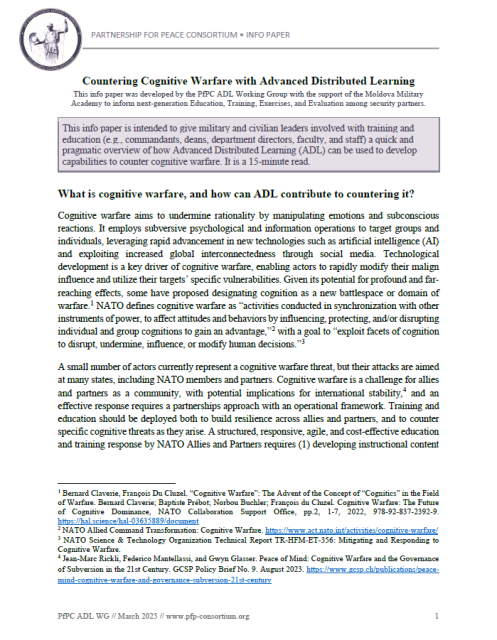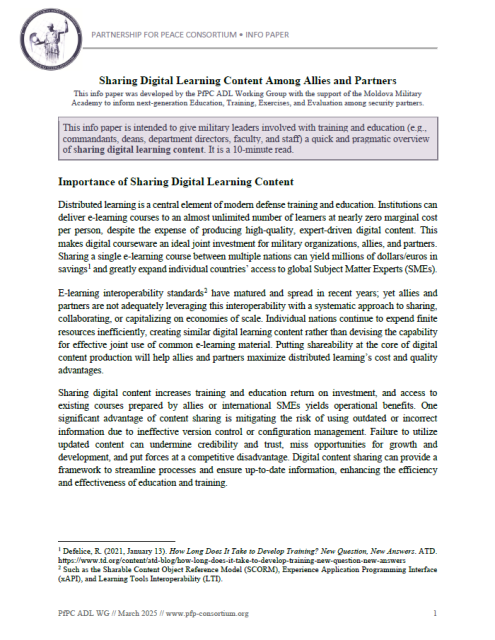Digitalization has made our societies vulnerable to cyber threats – from electric grids to elections. This is also true for militaries, and cyber defence has become a natural task for all defence organizations. Cyber threats cannot be considered as new threats anymore. However, the cyber threat landscape is changing rap-idly, and will continue to do so. Malicious viruses, hackers, hacking, etc., are still part of this landscape, but cyber weapons and cyberattacks originating from nation states are the primary security concerns today. Malicious actors are quick to learn from each other and their tools proliferate. How should we respond? The creation of more secure cyberspace is possible only through co-operation. As there are no traditional borders in cyberspace, NATO Allies and Partners share the same responsibilities, as well as opportunities.
- Test 1
- Test 2
- Test 3
Cooperation in the area of cyber defence was, as it clearly appears from the name, the primary motivator behind the establishment of the NATO Coopera-tive Cyber Defence Centre of Excellence (NATO CCD COE) by six NATO nations in 2008. As of today, the Centre is staffed and financed by 25 countries alto-gether. Belgium, Bulgaria, the Czech Republic, Denmark, Estonia, France, Ger-many, Greece, Hungary, Italy, Latvia, Lithuania, the Netherlands, Norway, Po-land, Portugal, Romania, Slovakia, Spain, Turkey, the United Kingdom and the United States are signed up as Sponsoring Nations of the NATO CCD COE. Aus-tria, Finland and Sweden are Contributing Participants, a status eligible for non-NATO nations. The Centre continues to attract new members: Japan, Croatia, Montenegro, Slovenia and Switzerland are in the process of joining the Centre. In addition, Canada, Luxembourg and Australia have announced their intention of accession.
The NATO CCD COE, focusing on research, training and exercises, offers vari-ous training courses at a technical, operational, and strategic level for its mem-ber nations. In addition, the International Law of Cyber Operations Course is prepared for legal advisors. The Centre conducts a yearly international Red Team vs Blue Team exercise Locked Shields for cybersecurity experts to en-hance their skills in defending national IT systems and critical infrastructure under real-time attacks. Locked Shields also includes a strategic element that covers decision-making, legal, and communication aspects. More than 1500 experts from 30 nations took part in Locked Shields 2019. Crossed Swords, an-other annual exercise, is a technical red-teaming cyber exercise targeting pene-tration testers, digital forensics experts and situational awareness experts. The annual conference CyCon—International Conference on Cyber Conflict—is the Centre’s contribution to the broader cybersecurity community. CyCon pro-motes research and development on the technical, legal, policy, strategy, and military perspectives of cyber defence and security. One of the internationally recognized research accomplishments for the Centre has been the “Tallinn Manual 2.0 on the International Law Applicable to Cyber Operations.” 1 The Tal-linn Manual 2.0 is the most comprehensive analysis of how existing interna-tional law applies to cyberspace. Finally, since 2018 the Centre is responsible for identifying and coordinating education and training solutions in cyber de-fence for all NATO bodies across the Alliance. As the Centre’s heart is its inter-national staff, cyber experts with various backgrounds, then all our deliverables are practical examples of the value and benefits of international cooperation.
The importance of cyberspace for our societies and economies will only grow. It is still transforming – connecting increasingly more people and devices, new emerging technologies allow new functionalities. But the future of cyber-space is in our hands. This growth and development are only possible if security and safety of, and in, cyberspace are provided. This means that our national policies, strategies, and laws need continuous review and adaptation. Cyberse-curity will remain a challenge for all governments and globally. We will see dis-cussions on roles and responsibilities of different state institutions, including military, on how to best respond to this challenge.
In this issue of “Connections,” perspectives from Austria, Germany, Israel, Switzerland, the UK and the US are all valuable reference materials for other nations.
The more ambitious goal—more secure and safe cyberspace as a whole—is only possible through international cooperation. NATO and the EU, and other organizations, have a significant role here. Yes, international cooperation in cy-bersecurity is a sensitive and complex issue, and there are limits. However, the very basis for this cooperation is trust, information sharing and the ability to learn from each other. If we succeed with this, then the door for further cooperation is open. The current issue of “Connections” is another step toward opening this door further.
Disclaimer
The views expressed are solely those of the contributing author and do not rep-resent official views of the PfP Consortium of Defense Academies and Security Studies Institutes, participating organizations, or the Consortium’s editors.



